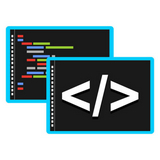答案:Golang并发编程常见错误包括数据竞态、死锁、活锁和Goroutine泄漏,需通过race检测、pprof分析、go tool trace及context管理等工具和方法系统性排查与解决。

Golang并发编程的魅力在于其简洁高效,但伴随而来的是一系列独特的挑战,尤其是当错误悄无声息地潜入并发逻辑时。常见的错误往往围绕着竞态条件、死锁、goroutine泄漏和上下文管理不当展开,而排查它们则需要一套系统性的思维和工具,比如利用
pprof
go tool trace
在Golang并发编程中,排查错误的核心在于理解并发原语的工作方式以及Go运行时(runtime)的内部机制。我们通常会遇到几类高频错误:数据竞态(Data Race)、死锁(Deadlock)、活锁(Livelock)以及Goroutine泄漏(Goroutine Leak)。
1. 数据竞态 (Data Race) 的排查与解决 数据竞态是指两个或更多个goroutine并发访问同一个内存地址,并且至少有一个是写入操作,同时没有进行同步控制。这会导致不可预测的结果。
-race
go run -race main.go
go test -race ./...
sync.Mutex
sync.RWMutex
sync/atomic
atomic.AddInt64
atomic.LoadInt32
2. 死锁 (Deadlock) 的排查与解决 死锁是并发编程中最令人沮丧的问题之一,程序会完全停止响应。它通常发生在多个goroutine互相等待对方释放资源时。
SIGQUIT
kill -3 <pid>
Ctrl+Break
go tool trace
go tool trace
context.WithTimeout
select
default
3. Goroutine泄漏 (Goroutine Leakage) 的排查与解决 Goroutine泄漏是指一个或多个goroutine在完成其任务后未能正常退出,持续占用系统资源(内存、CPU),导致系统性能逐渐下降。
pprof
net/http/pprof
goroutine
heap
goroutine
context.Context
context.WithCancel
context.WithTimeout
ctx.Done()
sync.WaitGroup
context
WaitGroup
for range
select
Go语言的生态系统提供了一套相当成熟的内置工具,它们在并发问题排查上简直是“神器”。我记得有一次,一个看似简单的缓存更新逻辑,在并发量一上来就频繁出问题,数据总是不对。
go run -race
sync.Mutex
go run -race
go test -race
pprof
runtime/pprof
net/http/pprof
go tool pprof http://localhost:6060/debug/pprof/goroutine
go tool pprof http://localhost:6060/debug/pprof/heap
goroutine
go tool pprof http://localhost:6060/debug/pprof/cpu
go tool trace
go tool trace trace.out
这些工具就像是Go语言给我们的X光机和CT机,能穿透代码表象,直达并发问题的核心。但用好它们,需要一点经验和对Go运行时机制的理解。我发现很多新手只是简单地跑一下,却不知道如何解读那些图表和数据。关键在于,你要带着假设去观察,去验证。
立即学习“go语言免费学习笔记(深入)”;
死锁和活锁,一个是不动,一个是白动,都挺要命。我个人的经验是,在设计初期就要尽可能地简化并发模型,能不用锁就不用锁,能用
channel
channel
死锁的预防策略:
sync.Mutex
select
context.WithTimeout
sync.TryLock
for range
select
活锁的预防策略:
Goroutine管理就像是养宠物,你得知道它们什么时候该工作,什么时候该休息,什么时候该回家。最怕的就是那些跑出去就不回来的,时间长了,家里(系统资源)就乱套了。我特别喜欢
context
WaitGroup
1. context.Context
context
context.WithCancel(parent context.Context)
context.WithTimeout(parent context.Context, timeout time.Duration)
context.WithDeadline(parent context.Context, deadline time.Time)
select
ctx.Done()
Done()
func worker(ctx context.Context, id int) {
for {
select {
case <-ctx.Done():
fmt.Printf("Worker %d: Context cancelled, exiting.\n", id)
return
case <-time.After(1 * time.Second):
fmt.Printf("Worker %d: Doing work...\n", id)
}
}
}
// 示例用法
// ctx, cancel := context.WithCancel(context.Background())
// go worker(ctx, 1)
// time.Sleep(5 * time.Second)
// cancel() // 发送取消信号
// time.Sleep(1 * time.Second) // 等待worker退出2. sync.WaitGroup
sync.WaitGroup
context
wg.Add(delta int)
wg.Done()
wg.Wait()
func task(wg *sync.WaitGroup, id int) {
defer wg.Done()
fmt.Printf("Task %d started.\n", id)
time.Sleep(2 * time.Second)
fmt.Printf("Task %d finished.\n", id)
}
// 示例用法
// var wg sync.WaitGroup
// for i := 0; i < 3; i++ {
// wg.Add(1)
// go task(&wg, i)
// }
// wg.Wait() // 等待所有任务完成
// fmt.Println("All tasks completed.")WaitGroup
context
WaitGroup
context
3. 通道的正确关闭与消费
通道是Go并发的核心,但如果使用不当,也可能导致goroutine泄漏。
for range
select
for range ch
select
ctx.Done()
select
ok=false
func consumer(ch <-chan int, ctx context.Context) {
for {
select {
case <-ctx.Done():
fmt.Println("Consumer: Context cancelled, exiting.")
return
case val, ok := <-ch:
if !ok {
fmt.Println("Consumer: Channel closed, exiting.")
return
}
fmt.Printf("Consumer: Received %d\n", val)
}
}
}
// 示例用法
// dataCh := make(chan int)
// ctx, cancel := context.WithCancel(context.Background())
// go consumer(dataCh, ctx)
// dataCh <- 1
// dataCh <- 2
// close(dataCh) // 发送方关闭通道
// time.Sleep(1 *以上就是Golang并发编程中常见错误排查实例的详细内容,更多请关注php中文网其它相关文章!

编程怎么学习?编程怎么入门?编程在哪学?编程怎么学才快?不用担心,这里为大家提供了编程速学教程(入门课程),有需要的小伙伴保存下载就能学习啦!




Copyright 2014-2025 https://www.php.cn/ All Rights Reserved | php.cn | 湘ICP备2023035733号